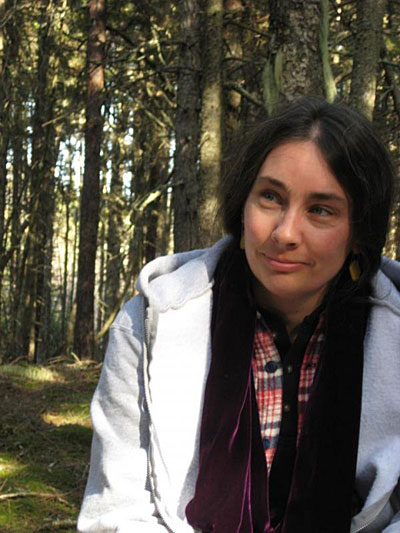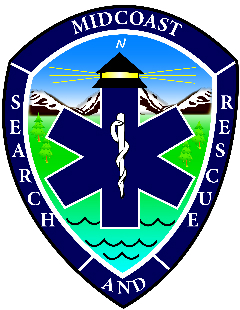What is it like to be one of Maine’s Search and Rescue volunteers?
A hiker or a hunter doesn’t show up at camp for supper and friends begin to worry. An elderly person, perhaps suffering from dementia, goes for a walk and doesn’t return home. A toddler leaves the back yard and terrified parents cannot find the child anywhere. A teenager disappears and the signs are not looking good. What next?
When local authorities need help finding a missing person in Maine, their first call is to the Maine Warden Service. Occasionally, special circumstances make another agency such as the State Police, United States Coast Guard, or Marine Patrol the primary contact, but the game wardens are Maine’s search experts, with a wealth of experience finding lost persons in all parts of our state—not just the deep woods.
Former chief warden pilot Roger Wolverton, now a pilot for Penobscot Island Air in Owl’s Head, explains the role of the Warden Service in search and rescue operations: “The Warden Service by law is responsible for all ground searches here in the state of Maine.” Once contacted by local law enforcement or an emergency dispatcher, the game wardens will organize and perform the initial stages of the search. If it becomes clear that the search is going to require more than a few people or take an extended period of time, they will set up a command post and bring together additional resources. As information comes in from searchers or others—including even the tiniest of clues — data is analyzed and the wardens may be able to refine the search process and increase the likelihood of a happy outcome.
If the search, or the eventual rescue, requires specialized crews such as a dog team, aircraft, or high-angle mountain rescue personnel, the warden service brings in that level of help. Wolverton mentioned that “When I flew for them, the warden service had three airplanes, Cessna 185’s, on floats or skis or wheels depending on the time of year. Some years I participated in over 100 aerial searches myself. The state of Maine is over 90% forest, but we also search urban areas.”
If what is needed is simply more eyes and ears, more feet on the ground, the wardens contact the Maine Association for Search and Rescue (MASAR), which then dispatches teams of trained volunteers who are located around the state.
One of those volunteer groups is Midcoast Search and Rescue, based in the Rockland/Union area. I spoke with Jody Dinsmore of South Thomaston, who is the Director of the Midcoast team, about how volunteers are sent out:
“We get called out by MASAR which is contacted by the Maine Warden Service. I get a text saying they need people on this date, at this location, and they’ll specify whether they want only certified people of if they just need lots of helpers (which is less common). Then I send a text message to all our members asking who’s available, who wants to go. In the ideal world everybody responds to me quickly with yes or a no, and then we sort out if we want to car pool, etc. When we get to the command post we check in-- there’s always a check-in post run by Dirigo SAR, so they know who’s available and what capabilities they have — then we find out what the wardens want us to do. For example, they may combine a bunch of teams and put a lot of people on a line search. We can’t get involved as a SAR team until we are called for by the wardens. The exception to that is Midcoast is a Community Emergency Response Team (CERT) under the Knox County Emergency Management Agency, so we could be called out by the county EMA director for help with something local. Knox County did call us to Friendship last year (to help local responders look for) an elderly person who’d left home and hadn’t came back. Normally it’s the warden service, though. We don’t call ourselves out.”
The certification of team members is important because it indicates to the wardens and to everybody else involved that each volunteer will not be “just one more person off in the woods they have to worry about.” The properly trained searcher understands the basics of safety and procedure. He or she would presumably manage alright if they got separated from the group and found themselves stuck in the woods for a while. A certified searcher need not be a “hard-core outdoorsman” but they will know how to gear up for the expected weather, they understand their own physical fitness level, and they head out safely prepared with food, water, a compass, and a few other helpful supplies. The wardens also know that a certified searcher will work with the team and follow instructions, and will do their best to protect signs, clues, and evidence.
It is important to remember that sometimes the searchers will be looking for small, hard-to-spot signs that a person has been there, not just for a human being. A good searcher needs to be deliberate, careful, and methodical. By way of example, the MASAR published standards for training state that the “The trainee shall demonstrate an understanding of the concept of searching for clues, not just subjects. The trainee shall list the types of clues most likely to be observed by field searchers, the probable locations of each, and methods of preservation. The trainee shall demonstrate the ability to observe and evaluate clues. The trainee shall explain the importance of handling clues as potential evidence of a crime” (taken from the Maine Association for Search and Rescue, Search Team Member Certification Standard Appendix C - Testing Objectives, Revised June 2010).
Searchers work as a group for their own safety and for efficiency. Disorganized, willy-nilly searching would often just be waste of time and effort. “Proper and adequate planning is critical to SAR mission success; if the wrong area is searched, there is no hope that search personnel will find the survivors, regardless of the quality of their search techniques or the amount of their effort.” (International Aeronautical and Maritime Search and Rescue Manual, 1999). Basic SAR training includes outdoor safety, search techniques, evidence preservation, and navigation and orienteering skills. Workshops and annual gatherings offer ongoing training which may include some interesting special topics. For instance, in a presentation to searchers about autism awareness last spring, I learned that it is common for autistic children to be strongly attracted to water, meaning that when a youngster with autism is missing, searchers should immediately check and secure nearby riverbanks and shorelines.
Spending the day hiking in heat or cold, off-trail on a mountain, in the woods, or most anywhere outdoors can come with a small degree of manageable risk, so search team members are also there to assist each other in case of injury. Midcoast’s Dinsmore recalls her first search, when she found herself useful to a searcher from another agency who got hurt on Mt. Katahdin that day:
“I think it was Memorial Day weekend, it must have been in 2010, and there was a call about a lost gentleman up on Katahdin. We were up to Chimney Pond or somewhere in that area when they called on the radio and said, “We need EMS personnel. Who is an EMT?” Three of us from Midcoast all said, “We are!” One of the searchers with the dog team had dislocated her knee. They led us down off the mountain, took us across a little ravine, and we went back up to where the dog team had been working, which wasn’t exactly an easy hike because now we weren’t on any trail. When we got to the patient she already had her knee all packed up and she said she didn’t want it reduced (under some circumstances a wilderness EMT may do that procedure in the field, but not if the patient says it’s going to hurt too much). So they sent the other people back down (and back to the search) and I stayed with her until they could med-evac her out, because she couldn’t walk. I was the only other female, so I was asked to stick with her and help her. She ended up being airlifted out by the Air National Guard out of Bangor, and she did have something serious going on with her knee. I think I stayed on that mountain until about 9:00 p.m. The next day, they did find the lost man, who had been injured but was basically fine. That shows that it’s not just the people we go out searching for that we’re working for.”
Jody smiled: “We caught the holy old devil, though, for cutting down trees in the park! We tried to get a smoke signal going because the helicopter was having a very hard time finding us. Sometime later I got a call from the director of the dog team, just thanking me for staying with their team member.”
I asked Dinsmore whether she’d had any scary moments as a SAR volunteer. “They can be kind of scary. The scariest might have been that one in Glenburn (April ,2013,) knowing what we might find, thinking that the girl (Nichole Cable) was likely to be dead. You do have to think about what you’re going to find. Then there’s the Ayla Reynolds case. We had gone to Waterville (when Ayla first disappeared,) we had all been briefed, and we were traveling along the river, a few of us from Midcoast interspersed with people from another team. It was wet and nasty out that day—might have been early spring. There must have been a driving range around somewhere because I kept finding golf balls. Anyway, one of the team members came upon a skull—a real skull! So we called in to command, and pretty soon we found a man’s boots, then his pants, then his wallet with his ID. We went up on the railroad tracks to wait for the detectives to show up. After we told the detectives everything we knew, we went back to work. Well, the identification card was something that had expired a few years before. It turned out to be a missing person’s case from ten or more years back.”
Dinsmore chuckled about collecting up the golf balls. “You find all kinds of cool stuff, neat things. One time one of the guys found a big huge turtle shell in the middle of a swamp. We’ve stumbled into paintball courses hidden in the woods, things like that. The flowers can be really nice. You get to see ladyslippers and other rare plants.”
I asked Dinsmore whether she ever felt herself to be in a dangerous situation as a searcher.
“No. For example, on the Geraldine Largay search (near Sugarloaf last summer) I told warden Rick LaFlamme, who was in charge, ‘I can’t do this terrain because my ankle is injured, but I can help as medical personnel.’ I stayed at the command post with the wardens in case anybody needed me as an EMT.” Also, the wardens won’t send volunteers in if they think there’s a particular threat, like an armed person. As Dinsmore put it, “They’ll send themselves. They’re capable of dealing with that and they won’t send volunteers into danger. They will only call us out to a point; for instance if the missing person is somebody unstable and the wife says, “Uh oh, there’s a gun missing from the home,” they won’t send us in. They don’t endanger the welfare of volunteers.”
Depending upon the terrain and potential medical issues, the “rescue” part of “search and rescue” can be much more complex than the search. Critically injured hikers on isolated rock outcroppings may need specialized teams of responders, even helicopters. Many searchers have experience as emergency medical technicians, ski patrollers, firefighters, or other types of responders, and all must have at least CPR and some basic first aid training, but search volunteers are never asked to provide treatment they aren’t prepared to render. You don’t need to be a wilderness paramedic or a mountaineer to offer your help as a SAR volunteer. If specialists are needed, they will be brought in. The rest of us do what we can.
Searchers obviously derive a lot of satisfaction from locating somebody, especially if the missing person is brought home safely or delivered to needed care, and of course this is the case for the professionals as well as for volunteers. Pilot Roger Wolverton, who retired from the Warden Service in 1998, described finding missing children with his airplane: “I was out in the fall one year, stocking fish into ponds around Greenville, and I got a call that there was a lost child around Sebec Lake. I gassed up the plane in Greenville and headed right down. While I was in the air the guys on the ground briefed me over the radio. They told me what the little girl was wearing and also mentioned that there was a dog. We know from experience that children will often follow a dog. Flying over a heavily wooded area, where it was very hard to see anything, I looked down and saw a dog run across a clearing; it sat right down next to the little girl. I radioed back to the guys on the ground and circled around so they could find her.”
Wolverton offers advice to the general public should they get lost in the woods. “The hardest thing for people to do is admit they are lost. A healthy individual has a tendency to just keep on walking. Get out in the open, stay put, and make yourself visible. Start a smoky little fire if you can.”
SAR teams sometimes help as safety volunteers at large events such as the Kenduskeag River canoe race. If this sometimes seems a bit like a hobby, there is a strong element of community service to it, and often the people involved in SAR tend to be folks who like to be involved in their communities in a number of ways—and therefore, they tend to be very busy. It is understood that there are times when even the most committed SAR volunteer is not free to cross the state to help with a given case. “It’s totally voluntary,” Dinsmore reminds us. “If you’re busy, if you have to go to work, it’s ‘Oh well, next time’.”
I asked Dinsmore what keeps her involved. “It’s fun!”
If readers would like more information about becoming a SAR volunteer or have questions, contact Jody Dinsmore, Midcoast SAR,by e-mail at Midcoastsearchandrescue@gmail.com, or 542-2483. If you are outside of the Rockland area the MASAR website lists teams around the state. Anybody interested is also welcome to attend one of Midcoast SAR’s meetings; the next meeting is Tuesday, Feb. 11, 6 p.m. at the Knox County Emergency Management office, 301 Park Street, Rockland.
 Eva Murray lives on Matinicus
Eva Murray lives on Matinicus
More Industrial Arts
• Quiet on this last day of the year (Dec. 31, 2013)
• A one-room school Christmas (posted Dec. 21, 2013)
• Here's wishing us all a little rebellion in this happy season (posted Dec. 12, 2013)
• Roadside assistance (posted Nov. 27, 2013)
• Eva Murray: On the many kinds of emergency responders (posted Nov. 18, 2013)
• (In defense of...) Breakfast for supper (posted Oct. 22, 2013)
• Fish Factory (posted Sept. 9, 2013)
• 350 dot Rockland... and many ruminations on small efforts (posted Aug. 30, 2013)
• Trains and planes and heroes (posted July 15, 2013)
• Joining the community of artists (posted July 4, 2013)
• Worth every penny (posted July 27, 2013)
• It's about showing up. Some thoughts on EMS Week (posted May 27, 2013)
• Ethanol, gasoline, and public safety (posted April 17, 2013)
• A system that makes it hard on people who want to do the right thing (part 2) (posted March 29, 2013)
• A system that makes it hard on people who want to do the right thing (part 1) (posted March 21, 2013)
• 'It's important' (posted Jan. 18, 2013)
• Tree crew (posted Dec. 28, 2012)
• Light the candles (posted Dec. 13, 2012)
• Firewood (posted Dec. 2, 2012)
• Missing man formation (posted Oct. 18, 2012)
• In the middle of the bay (posted Oct. 3, 2012)
Event Date
Address
United States


































